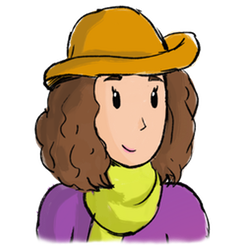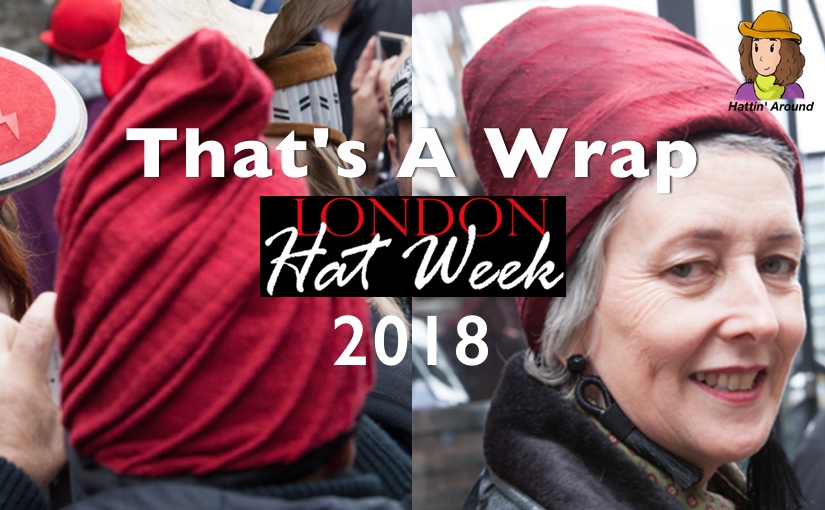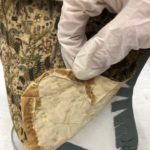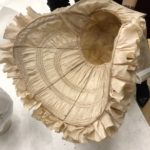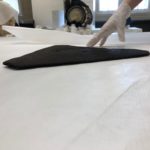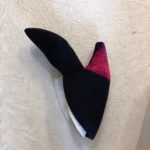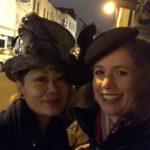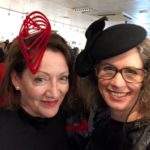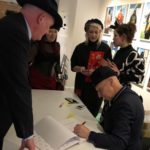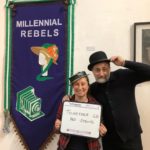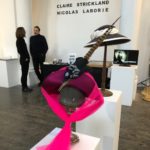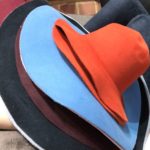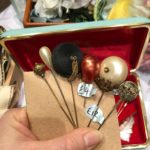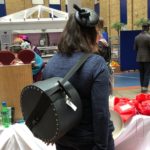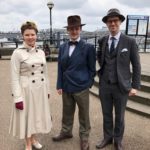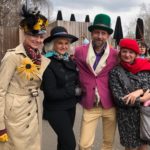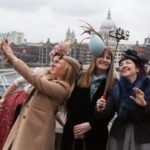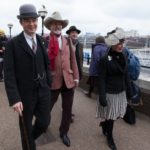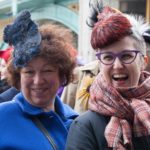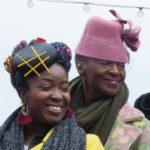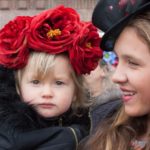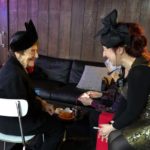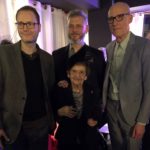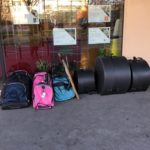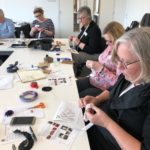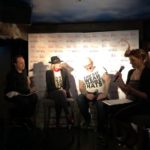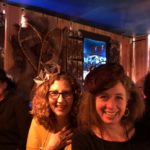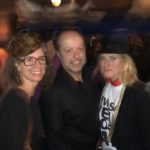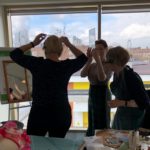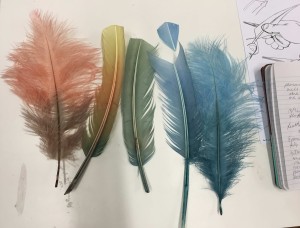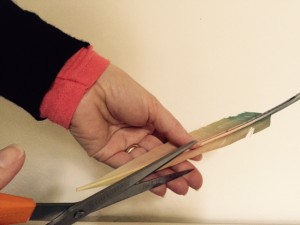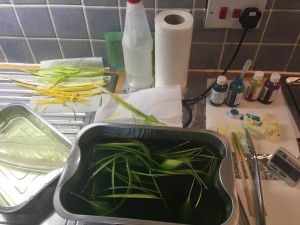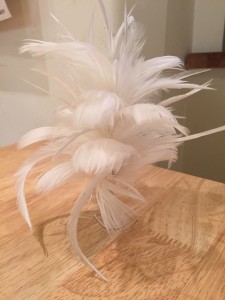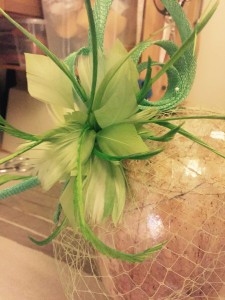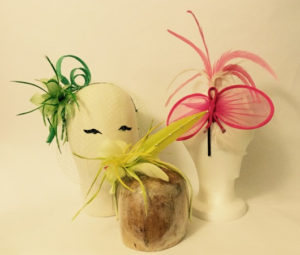
London Hat Week 2018 – Thurs, 22 March – Wed, 28 March 2018
I am still basking in the London Hat Week 2018 afterglow. I loved teaching the workshops, but they take loads of time to plan and prepare to a standard that I expect of myself and London venues are expensive, so in the final week before it all started I began to ask myself why I do this. However as I look back over the pictures and write this blog my mind is stirring with ideas and my heart is full with feelings of camaraderie and community. That is why I participate in LHW. I have written a brief summary of all the events and activities that I participated in. I hope you enjoy my recap of Hattin’ Around at LHW2018.
Thursday, 22 March
I loved going to the Clotheworkers’ Centre to see hats from the V&A collection. This was my 1st LHW activity and one of the many highlights. I have been wanting to do this for years! Huge thank you to Liz Waldy for coordinating this event.

Launch Party – once I got past the ridiculous process of figuring out what I was going to wear… I even made myself a wardrobe planner this year, but didn’t get very far filling it in. It was good fun saying hello to friends from the past. I also worked up the gumption to introduce myself to some new people. The Fashion and Textile Museum had an interesting t-shirt exhibition on, which provided a good back drop to the event. I loved Stephen Jones short talk to Kick Off LHW18. He always manages to offer new insight into the past & present fashion world. Highlights of the night was getting my make-up done by a make up artist sponsored by Judith M. and talking with Jaycow in the queue to get in.
Friday, 23 March
The Suffragettes: Millennial Rebels – A small exhibition by milliner Claire Strickland and photographer Nicolas Laborie. I love when people create small, unique experiences. It is one of the advantages of living in London. The exhibit was a curious mix of period and modern. To see the hats in life and then in wet plate photos helps to clarify how life of the past was not just black, white & shades of grey but in fact, even in London, full of color. However the real highlight for me was to discover that the models for the exhibition were girls that my own daughters home schooled with for a year when we first arrived in London. It is a small city after all.
The Great Hat Exhibition had so many hats! It was too much to take in at the time. I took loads of photos and will go back to look at them after I finish this blog post. There was an immense range of pieces covering a span of designs, materials, and craftsmanship skills. I have yet to fully digest all the pieces and select a few favorites. The highlight for me was running into Awon and to put together names, hats and faces of some of the milliners.
I dropped off my ha , “Celebration” at Edwina Ibbotson’s, A Muse For All Seasons Exhibition. I think my greatest regret of LHW18 was that I wasn’t able to get back to see everyone’s hats on display together and say hello to old classmates and work experience people. I was finishing my workshop prep & packing for teaching.
Saturday, 24 March
The Market Place on Saturday turn out to be expensive. I bought a book and a bunch of felts. I enjoyed meeting author of Hats, Clair Hughes and had a nice chat with her while I got my book signed. I completely overspent at the Pjooil table, but the prices were great and the fur felt colors were lovely. I dropped a few coins at Parkins then ran out of time and money. Highlight was finding some more vintage hatpins at Buzz’s table, just before my Hatpin workshop on Monday.
Sunday, 25 March
The Hat Walk from Tate Modern along the Thames to City Hall by Tower Bridge was fun and thankfully the weather was good. My good friend and photographer, Anna Watson came along to take photographs, so although we saw each other, we didn’t speak much as I fluttered about talking with hat people. There was a significant group of Red Hat ladies walking. I enjoy seeing women smiling and having fun together. The highlight was the feeling of camaraderie of walking together with everyone and meeting people from all over the world.
Market Place visit Part 2 – I literally sold the small hat case off my back! I had been doing a bit of Hattin’ Around Hat Case promotion by wearing the small hat case on the Hat Walk before going to the Market. I also picked up some pretty lace from The Trimming Company.
The Millinery Lesson film premier – In a very small theater, Marie O’Regan surrounded by family, friends and students watched a movie about herself. Filmed and produced by Mike Southon. The film had an original music score, was about an hour in length and a beautiful tribute to her. Highlight was feeling like a hero because I remembered the flowers that had been put in water in the back room, for Becky Weaver and Georgina Abbott (LHW Founders) to present to Marie after the Q&A with Marie & Mike.
Monday, 26 March
I hosted two workshops on Monday, a Hatpins workshop in the morning and Petersham ribbon trims workshop in the afternoon. The venue was between Vauxhall & Oval stations, the room was large, clean with a view of the London Eye. Highlight for me was meeting new students with a range of abilities and them leaving with pretty pins or ribbon nautilus & cockades and new skills. A huge thank you to my assistants, Clare Spicer and Sonia Freeman Birch.
An Evening of Royal Millinery a panel discussion at the Archer Street Bar was festive and educational. The awkwardness of the launch party was over. It was a cool venue with the wait staff singing a song about every 15 minutes. Highlight for me was of course listening to Dillon Wallwork , Jess Collett and Ian Bennet be interviewed by Becky Weaver of Hatalk. I must apologize to Dillon as it must have seemed like I was stalking him during LHW18. I had met him a few years ago at an event and approached him to talk several times, but didn’t remember to re-introduce myself until the panel discussion evening.
Tuesday, 27 March
I hosted an all day 1950’s style cocktail hat making workshop which introduced loads of techniques to the students. With a growth mindset and the learning that happens every time I teach a course, next time I will provide a kit of materials for purchase as well as a kit list. It was a lot to ask for the students to bring all the various bits needed. My highlight was to see the diversity of pieces they created with the same set of instructions and basically the same materials.
Wednesday, 28 March
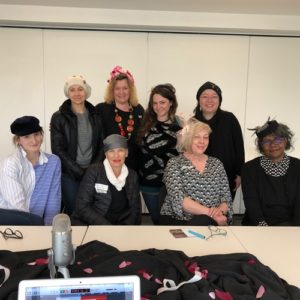 Milliners Roundtable Discussion was the final event for me. I have hosted/facilitated this free event at London Hat Week every year. The first year it was one hour squeezed within the lunch hour of another workshop, the second year it was 1.5 hrs. This year I expanded it to 2 hours and it still didn’t feel long enough and I had to cut off the conversation because we were out of time. There were six countries represented with ladies who have recently begun hat making to other who have been in millinery for 25 years. The conversation ranged all over from suppliers & issues to pests & mold and how to get started in business.
Milliners Roundtable Discussion was the final event for me. I have hosted/facilitated this free event at London Hat Week every year. The first year it was one hour squeezed within the lunch hour of another workshop, the second year it was 1.5 hrs. This year I expanded it to 2 hours and it still didn’t feel long enough and I had to cut off the conversation because we were out of time. There were six countries represented with ladies who have recently begun hat making to other who have been in millinery for 25 years. The conversation ranged all over from suppliers & issues to pests & mold and how to get started in business.

To all of you who participated in London Hat Week 2018, Thank you for making it a wonderful experience. Until next time….
